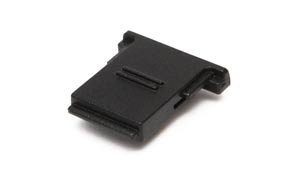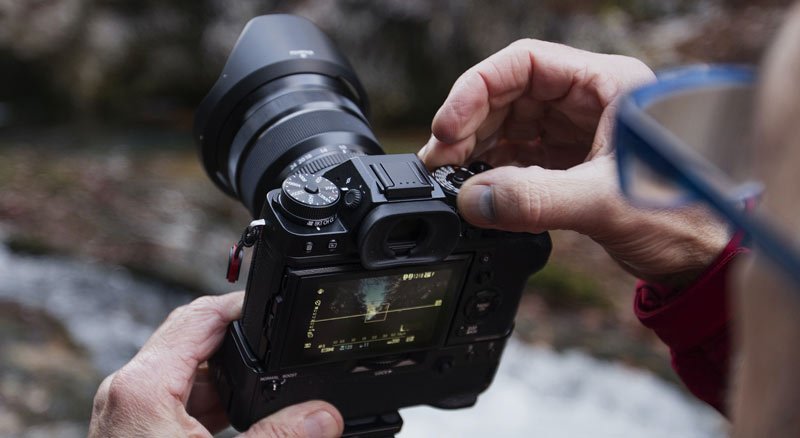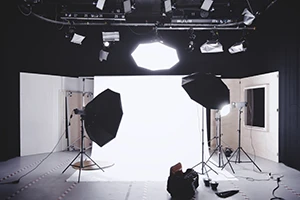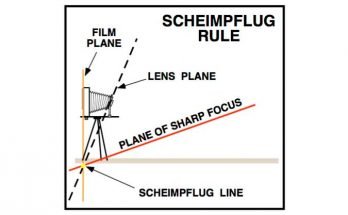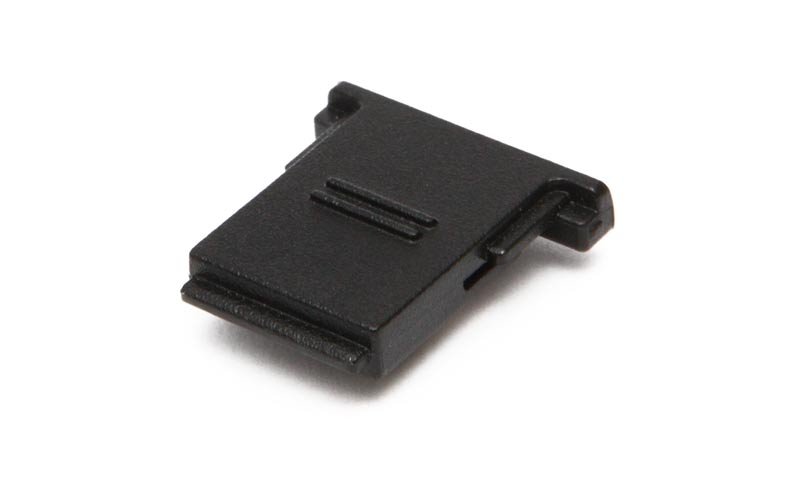
What is a hot shoe cover?
A hot shoe cover is a small protective cover that slides in a camera hot shoe when not in use. It’s main task is to protect the electrical contacts beneath from dust, moisture and grime. In addtion, a cover improves the resilience of the hot shoe and streamlines the contours of your camera. One of the most overlooked photographic accessories, the small hot shoe cover is an inexpensive way to save youself a lot of trouble.
Hot shoe covers are also used as an aesthetic accessory, with many decorative options available, including models made of wood or machined metal. Do note, however, that these covers are not a one-size-fits-all affair. Even if you can use one flash unit across cameras of several manufacturers, this does not mean that their hot shoe covers will fit one another.
How is a hot shoe cover used?
A hot shoe cover is a very simple and intuitive accessory. Essentially, whenever you are not using your hot shoe to attach an external flash or another accessory, you slide the cover in. Unlike flashes, covers do not have a locking mechanism, they are held in place by friction and/or simple molded spring clips. Unless your hot shoe cover is of an exotic design, you should not need to unlock or undo anything to remove it. Firmly slip it out towards the back of the camera. Replacing it is the reverse procedure, simply slide it in the shoe, as far as it will go with reasonable pressure.
Because of the friction fit, hot shoe covers are prone to get looser as they wear, to the point where one might slide right off without you noticing. This is why hot shoe covers, together with eyecups, are among the most frequently lost camera accessories. Some covers come with rubberized coating to improve friction, but this will, too, eventually wear. If you notice your cover getting loose, there’s not much you can do besides ordering a spare. Make sure you order the correct model for your camera to avoid fitment or operational issues.
Some cameras equipped a built-in flash may not activate it if there is something in the hot shoe, including a cover. These cameras usually have a microswitch under one of the rails that tells the camera that an external flash is connected, disabling the built-in one. If such a camera comes with a hot shoe cover from the manufacturer, it is usually designed so it does not interfere with the switch, but a third party accessory might not be so clever. When possible, the safest bet is to order an original replacement.
Do you need a hot shoe cover?
Many cameras come already equipped with a hot shoe cover, and it’s best you keep it on until you need to use the hot shoe for a flash, TTL cord or another accessory. The hotshoes today are a lot more sophisticated than the simple two-pin affairs of the pre TTL film era. In addition to providing complex flash metering communications, hotshoes nowadays double as connection ports for various accessories. On the Canon M6II for example, in addition to the five main flash contacts, there is a strip of 21 tiny contacts used to communicate with the optional EVF that attaches to the hot shoe.
That’s a lot of contacts, and with a pocketable camera like this, it’s easy to find them rendered unusable by dust or grime. A hot shoe cover (that the M6II comes with) helps prevent this. The Sony Multi Interface shoe, found on all of their recent cameras, is similarly equipped with 24 contacts to enable communication with GPS and WLAN modules, external microphones or EVFs. Soiling, shorting or damaging these contacts may wreck havoc on the camera’s electronics.
In addition to protecting the electronic contacts, a hot shoe cover also provides physical protection to the hot shoe. By supporting the rails on both sides of the hot shoe, the cover reduces the risk of bending them should your camera bump into something. Covering the exposed edges also makes your camera more streamlined, reducing the risk of catching on clothes or bag dividers.
While camera manufacturer provided hot shoe covers are almost exclusively geared towards protection, a lot of third party options have added functionality. A popular twist on the regular hot shoe cover is the addition of a spirit level. Another approach geared towards smaller, rangefinder style cameras is to integrate a thumb grip into the cover to improve handling. Finally, there are various metal, wooden or plastic models are decorated with decals, paint or engravings for aesthetic purposes. Decorative covers are often paired with matching soft shutter releases, thumb grips or cases.

